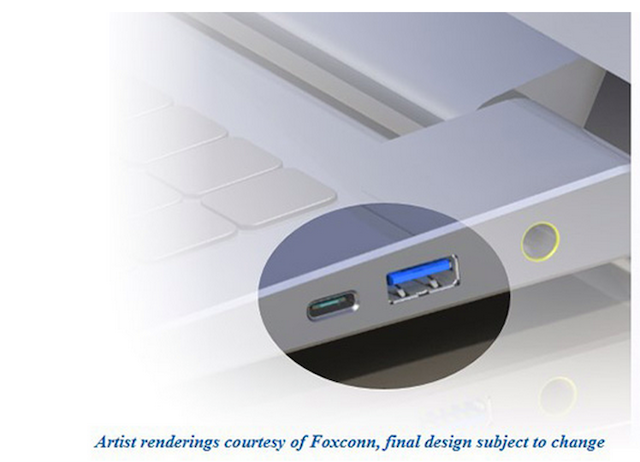New USB Type-C Cable is Reversible with Smaller Ports that Are Identical on Both Sides
The future of the Universal Serial Bus (USB) cable is set to arrive in July of 2014 with an all-new specification that will drastically improve convenience and ease-of-use when connecting and disconnecting USB devices. The new cables, which have been deemed USB Type-C cables, have much smaller ports than the USB cables you're used to seeing. In fact, they are about half the size; for comparison's sake they are closer to the size of a cell phone charger port.
Eliminating the Hassle and Taking a Page From Apple's Lightning Cable
The unique reversible design will make it possible to quickly connect USB devices without having to fumble with the cable and determine which end is the right side. This will not only reduce the amount of time it takes to establish connections, it will also reduce the likelihood of breaking the sometimes sensitive connector chips within the USB cable ports, as you won't have to worry about accidentally jamming the wrong side into the wrong port.
While this design is new to the world of USB cables, we have already seen a similar reversible design in the Lightning cable from Apple. The new cables will support USB 3.1 and USB 2.0 technology and will be capable of transferring bandwidth at a rate of up to 10Mbps, but even these high transfer speeds and new-school compatibility benefits can't compare to the primary advantage of the new cables – not having to worry about which side is the right side to plug in.
Maximum Convenience, But Limited Compatibility At the Moment
Although the official release of these cables is almost three months away, it is safe to say the USB Type-C cables will eventually change the way we use USB-compatible devices in everyday life. However, while the new reversible cables will certainly eliminate hassle in devices that it is compatible with, it will unfortunately not fit into the USB ports of most of our modern devices, and it could take a year or two before all of the new electronic devices are equipped with ports that can connect to the new Type-C USB cables.
More Environmentally Friendly and Compact
In addition to the boost in convenience, the smaller and more compact design equates to use of less resources and cheaper manufacturing costs for a superior product. The cables will therefore also have a lower carbon footprint than the current bulky USB cables we have a come to know. Furthermore, as if electronic devices were not already shrinking at an exponential rate, the smaller size of the USB Type-C ports will allow manufactures to make notebooks, tablets, and smartphones even thinner during the next few years.
Aren't These Cables a Bit Overdue?
Many tech enthusiasts are wondering why manufacturers did not introduce this type of cable long ago, as people have been complaining about the mismatched ports on USB cables since they were released more than a decade ago. Well, just in case you're as impatient as we are and you can't wait until July to see what the new USB Type-C cable looks like, here is a concept rendering from Foxconn as a teaser:

